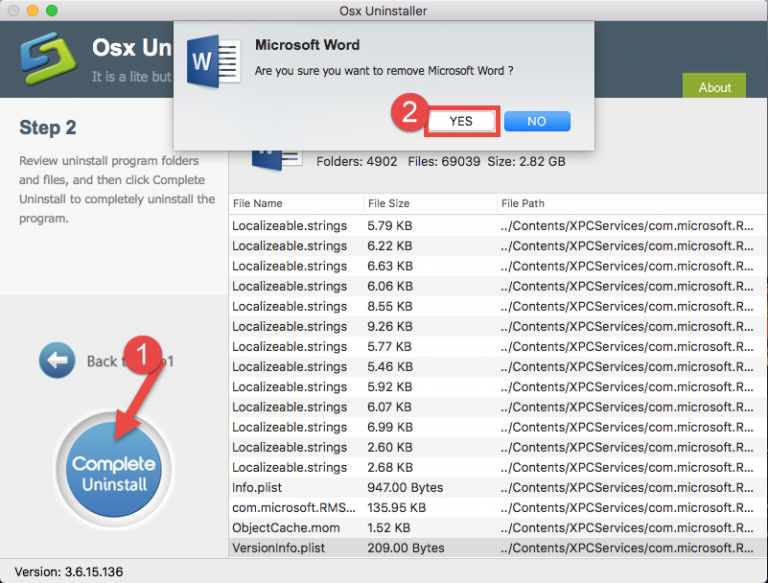고정 헤더 영역
상세 컨텐츠
본문

- Can't Uninstall Microsoft Office 2010
- How To Uninstall Microsoft Office 2011 Mac
- Microsoft Office 2010 Mac Uninstall Free
This article was written by Eric Ellis, Senior Support Escalation Engineer.
Uninstall Office for Mac 2011. Open Finder Applications. Find and then drag the Microsoft Office 2011 folder to Trash. Restart your computer. If you are wondering about how to uninstall office from mac, then you have come to the right place. Below are some options on how you can do this for you to be able to install a new Office on your Mac and for you to free up space as well. Yes, it is true that you can remove apps for our system has run out of application memory on your Mac.

When you troubleshoot KMS configuration and activation issues, you may find unexpected Windows or Office KMS hosts in their environment. This article describes how to discover Office and Windows KMS hosts through DNS, and how to remove unauthorized KMS hosts.
Note
The following steps are similar in Office KMS 2010, 2013, 2016, and 2019.
Aug 20, 2011 I installed a demo of Microsoft Office 2010 before I realized that the Apple iWorks suite gives me everything I need, between Pages, Numbers and Keynote. Now I want to remove Microsoft Office from my Mac OS X system, but there's no 'uninstaller'. Um, how do I completely, cleanly remove Office? Dec 20, 2019 The Microsoft Service Pack Uninstall Tool for Microsoft Office 2010 Client Applications is a command line tool which will assist with uninstalling client patches installed by Office 2010 service packs. Important Note: This download is only available in English, however it will work with any language version of the service pack. How to Uninstall Office on a Mac Manually. The first thing you should always do when uninstalling any app is to quit the program. So close Microsoft Office and make sure that there are no processes related to the app working in the background.

Discover Office and Windows KMS hosts through DNS
By default, Windows and Office clients discover KMS hosts through DNS and a related _vlmcs SRV record. To determine whether a KMS client can locate a KMS host or whether unwanted KMS hosts exist on the network, run a command similar to the following:
Review the kms.txt file, and it should contain one or more entries similar to the following:
Running this nslookup command frequently reveals _vlmcs SRV entries that are tied to unauthorized Windows or Office KMS hosts.
Remove unauthorized Windows KMS hosts

Can't Uninstall Microsoft Office 2010
In many cases, Windows KMS hosts may be unintentionally set up by users who mistakenly entered a KMS host product key, instead of a Windows client product key. To resolve this issue, follow these steps on the computer(s) in question, replace the KMS product key and convert it to a KMS or MAK client:
Open an elevated command prompt.
Run cscript slmgr.vbs /ipk xxxxx-xxxxx-xxxxx-xxxxx-xxxxx, where xxxxx-xxxxx-xxxxx-xxxxx-xxxxx is Windows product key (there should be 25 numbers).
To prevent instability in the license service, restart the system or the Software Protection Service. To restart the Software Protection Service, run the following commands:
Run the following command to display the license information for the installed and active Windows edition:
In DNS Manager, locate the appropriate forward lookup zone, and then delete the _vlmcs SRV records that exist for each computer which is not to serve as a Windows KMS host.
For more information, see the following articles:
Remove unauthorized Office KMS hosts
It's not common to create an Office KMS host unintentionally, because setting up an Office KMS requires a specific product key and the installation of the Microsoft Office 2010 KMS Host License Pack.
To determine whether a computer has the Office 2010 KMS Host License Pack installed and has an active Office KMS host, run the following command:
The output of a computer which has the Office 2010 KMS Host License Pack installed resembles the following. In the following example, key items are Partial Product Key: XXXXX and License Status: Licensed. These items indicate that the Office 2010 KMS host key is successfully installed and activated. To pull all the products installed, including all Office KMS host installations, run the following command:
In this command, path equals where you want to write the output. In this file, search for Office and find all the instances for the Office KMS host installations. If you only want to pull specific Office KMS information, replace the Activation ID that is mentioned earlier in the command (bfe7a195-4f8f-4f0b-a622-cf13c7d16864) with the Activation ID for Office 2013, 2016, or 2019. An example of the output resembles the following:
Then, follow these steps to remove an Office KMS host in your environment:
How To Uninstall Microsoft Office 2011 Mac
Open an elevated command prompt.
Run the following command to uninstall Office KMS host product key:
Warning
If the command is run without the Office activation ID (bfe7a195-4f8f-4f0b-a622-cf13c7d16864), all installed product keys are uninstalled, including those for Windows.
Run the following command again to check the status of the Office KMS host:
If the Office KMS host product key is removed, the output resembles the following. The key items are This license is not in use and License Status: Unlicensed.
In DNS Manager, locate the appropriate forward lookup zone, and then delete the _vlmcs SRV records that exist for each computer which is not to serve as an Office KMS host.
Microsoft Office 2010 Mac Uninstall Free
For more information, see the following articles:





댓글 영역